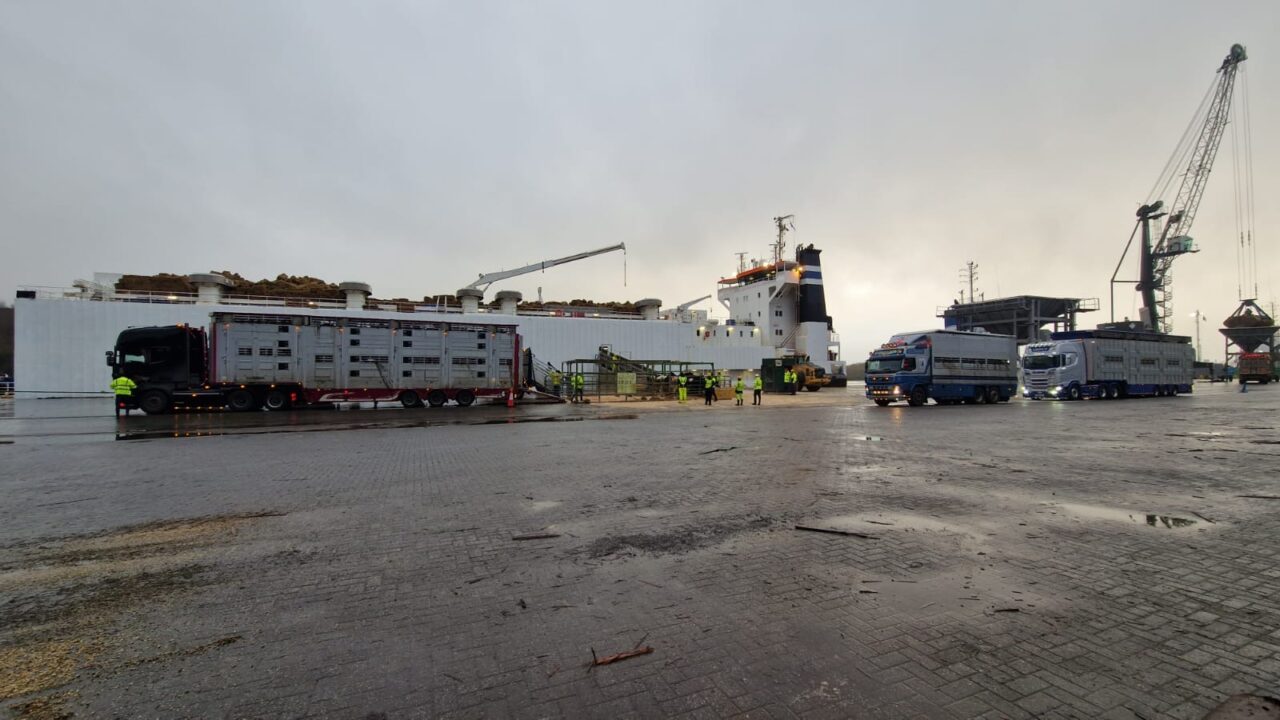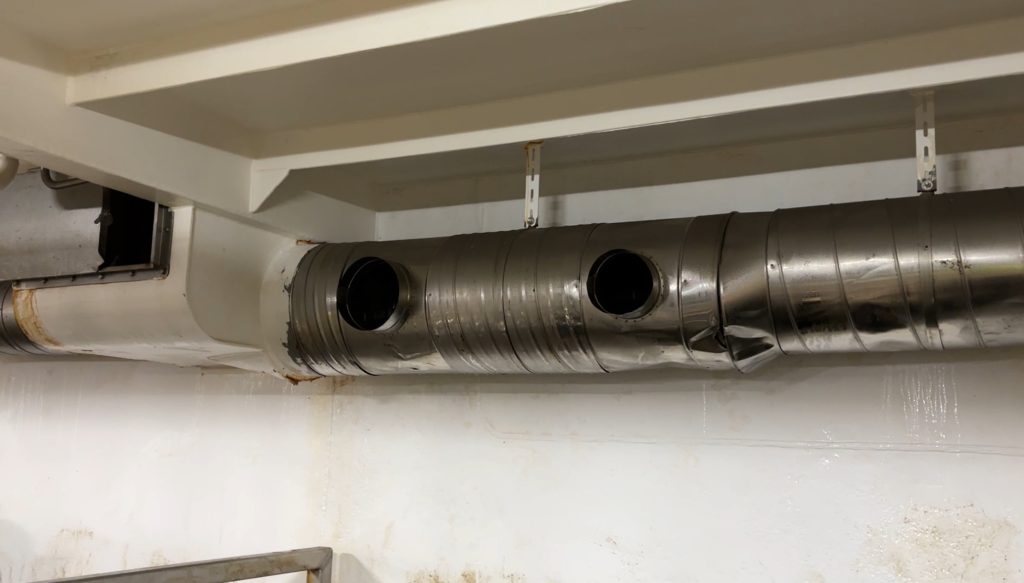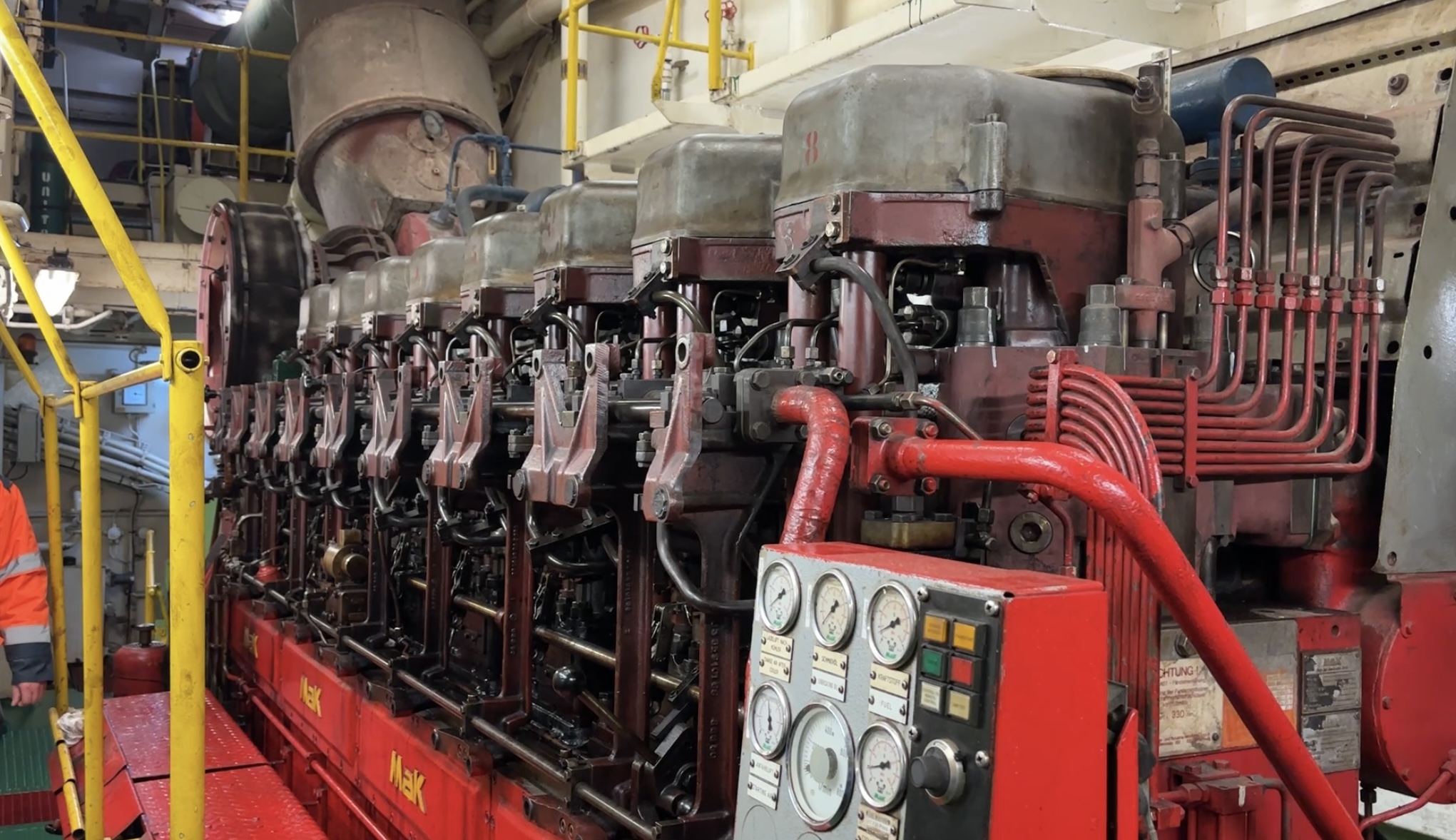Agriland got an exclusive look inside the MV Alondra livestock-carrier, where 1,600 purebred Friesian heifers are currently on board en route to Algeria.
The Danish-registered livestock carrier vessel, which is co-owned by Irish company Limetree Global Shipping, and Danish man Bjorn Claussen, set sail from Waterford port on Saturday evening (November 15).
The heifers currently on-board the vessel have been sourced by cows.ie, giving Algerian farmers a chance to buy into purebred Irish genetics.
The animals on board were all in-calf pedigree Holsteins registered to the Irish Holstein Friesian Association (IHFA).
Clarke told Agriland that the cows are sourced in the spring as maiden heifers, before going back to the company farm near Mullingar or one of the various contract rearers based across the country.
They are blood sampled before being purchased, and follow a strict herd health programme throughout the next few months.
Clarke explained that infectious bovine rhinotracheitis (IBR) is one of the main diseases they test for, with some of the heifers getting tested as many as seven times during the year.
He also ensures all cattle are fed a high-quality diet, ensuring they are at the correct body condition score (BCS) ahead of sailing, as they will be due to calve down in two or three months.
When talking about the systems and the high standards they adhere to, he commented: “Yes it adds expense, but the job will be done right.”
Day of export
Leading up to the day of export, Clarke quarantines all of the animals for the last 30 days before shipment.
Then on the day, inspectors from the Department of Agriculture, Food and the Marine (DAFM) thoroughly check each animal to make sure they are fit for export.
The inspectors also ensure that high standards of welfare are in place, by carrying out an inspection of the vessel before any animals are loaded.
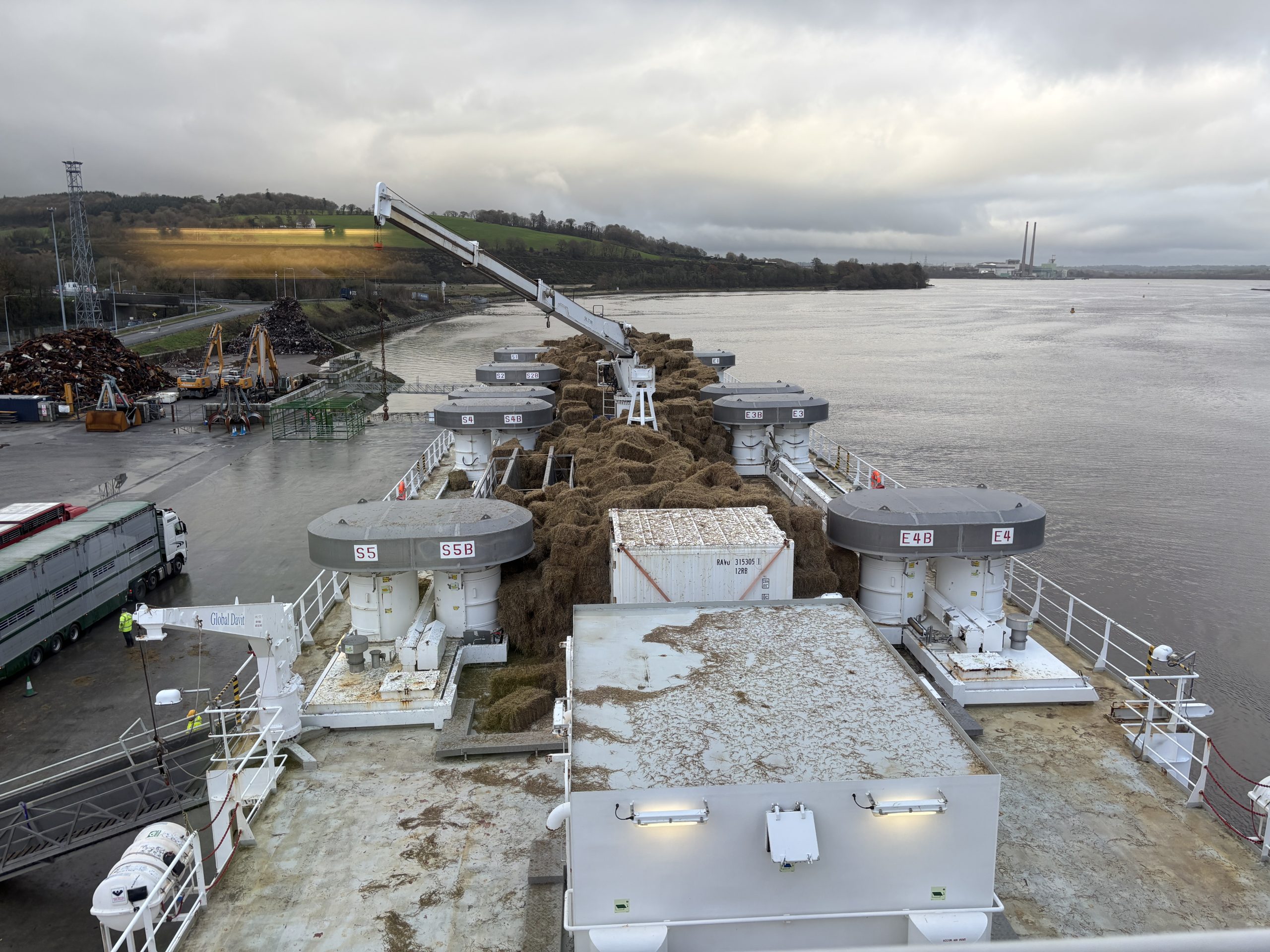

Alondra
In 2017, the MV Alondra was converted from a bulk carrier to a livestock carrier in Denmark, where it was then certified under Australian specifications, which are known to have one of the highest sets of standards globally for livestock carriers.
The ship can carry thousands of just about anything with four legs, ranging from calves and cows to pigs, sheep, donkeys, horses, and even camels.
The animals are evenly spaced out across the 261 pens onboard, with some people involved in the operation commenting how it is hard to find sheds as comfortable.

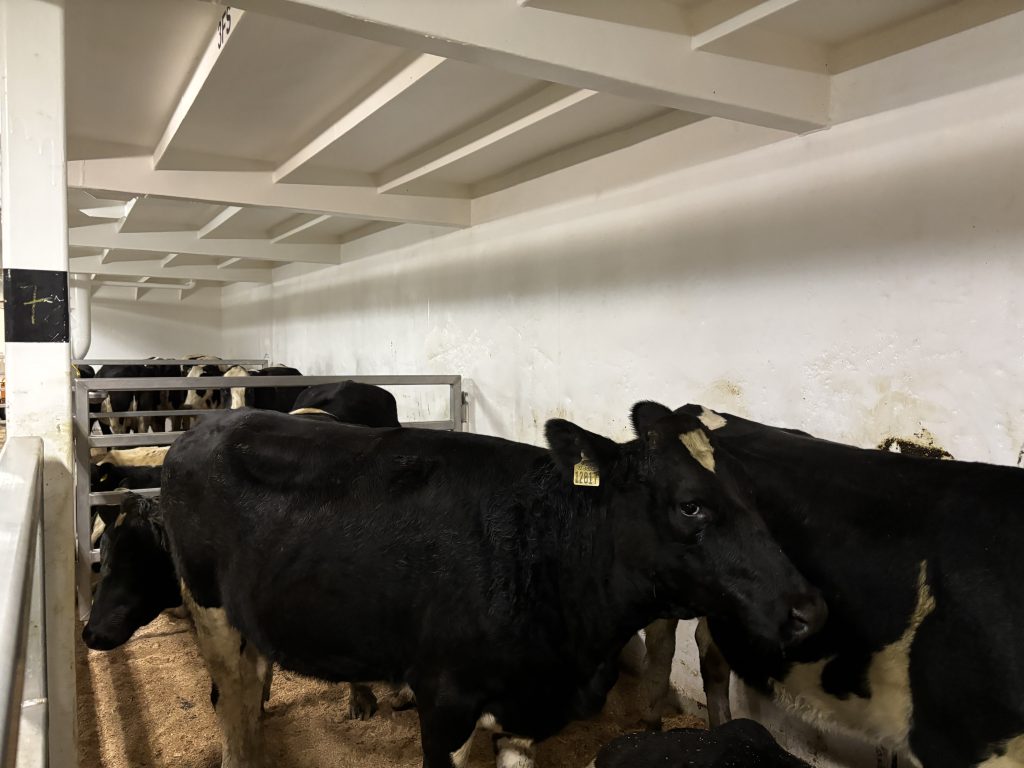
The ship is run by 19 crew who work a three-month-on and three-month-off roster, with 12 of the crew on board solely taking care of the animals.
The ship usually brings a vet and a stockman on the journeys too, to ensure everything is in top order with the animals.
The vessel also has sufficient fodder and fuel storage capacity for a 22-day voyage, with animals being fed hay and concentrates twice daily.
Throughout the rest of the day, the crew are continuously supplying the animals with water.
Captain Soren Mikkelsen ensures that the cows are watched 24/7 in an effort to ensure high standards of health and welfare.
He noted how the export of livestock on lorries has become increasingly popular, but noted how the animals cannot be fed like they are on the ship when being transported in lorries.
The captain also told Agriland that he feels automated feeding is not as good as it sounds.
He said while it saves on labour, it could mean the animals are not being continuously monitored and any ailments which may arise may potentially not be detected.
Ship conversion
During the conversion of the MV Alondra, the decision was made to keep the side walls of the vessel closed.
This decision has made bedding far more comfortable for the livestock, as no water can splash in, keeping them nice and dry for the journey.
However, this decision meant the ship would need heavy-duty ventilation systems, which were put in place to keep housing at a comfortable temperature throughout the journey, especially in warmer regions.
The livestock are bedded on a thick layer of sawdust, which is put down before loading, and is continuously topped up throughout the journey.
Each day, the vessel reports on feed given, feed available, water given, temperatures and humidity, alongside general ship information such as journey progress.
The ship is then inspected by the department of agriculture at each port when they arrive, and again before they leave.
When the cows are off-loaded, the crew spends six days cleaning the ship to ensure full hygiene is in place before the next load.
The 97m long ship is driven by 3,600hp, allowing it to maintain approximately 12.5 knots and deliver the stock quickly but comfortably.
